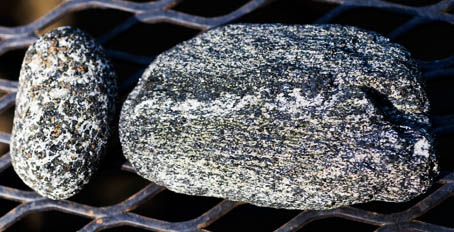
One of the first steps towards identifying metamorphic rocks is to determine if it has foliation or not. Luckily, this is usually easy to do. Foliation means banding or alignment of the minerals resulting from pressure. A good example of that is the banding present in a metamorphic rock called gneiss, pronounced "nice".
This piece of gneiss formed from granite similar to the rock sample seen on the left hand side of the photo.
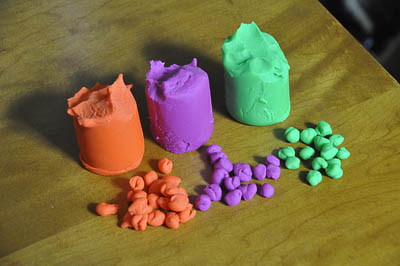
To understand how this happens, and what it can tell us, you will need:
- several colors of Play-Doh or modeling clay
- a cheese cutter or knife to cut the Play-Doh
Start by using Play-Doh to make many small lumps, as seen in the photograph. These will be used to simulate the grains in a piece of granite. You do not need the same amount of each color. It is not unusual for granite to have more of one mineral than another.
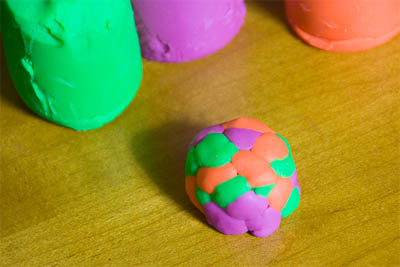
Press the lumps into a ball, trying to distribute the colors fairly evenly. Use just enough pressure to form them into a large lump, without distorting them too much. At this point, you have simulated a piece of granite, with the different colors representing quarts, feldspar, and biotite.
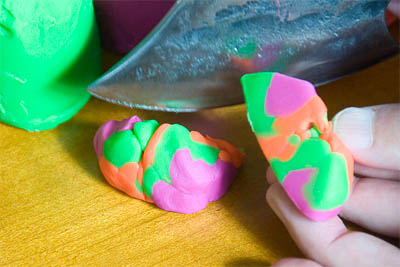
Then use a cheese cutter or knife to slice through the lump, being careful not to squeeze or distort the lump as you cut it. Look at the shape of the different colored "grains," noticing that they are all similar to the shape they started with. It is easy to see the individual grains.
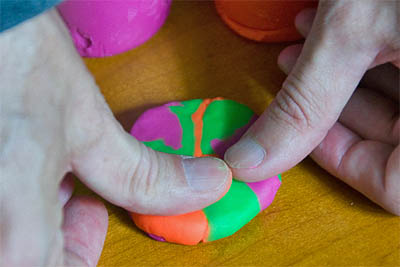
Gently press the two halves back together to make it a single lump again.
Placing it on the table, press down on it to flatten it into a disc. You don't want it paper-thin. Instead, it should be at least 1/4 inch thick. As you press down on the lump, you are simulating the pressure in the Earth that changes granite into gneiss.
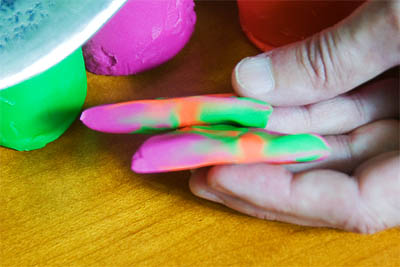
Once again, cut the "rock," so you can see the internal structure. What do you notice this time?
The grains are flattened into layers, just as they are in the piece of gneiss. Notice the direction that they flattened compared to the direction you pressed. You pressed downwards, and the grains were squeezed out to the sides.

The same is true for foliated metamorphic rocks. The foliations can tell you the direction of the pressure that formed them. In the photograph of the actual piece of gneiss, which direction was the pressure pushing?
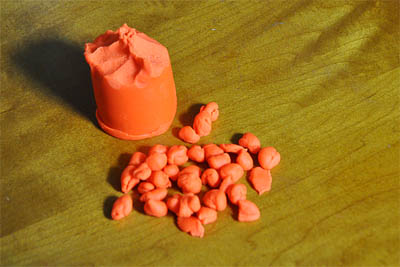
OK, so why are there some metamorphic rocks that are not foliated? We can see one of the reasons by making another rock; this time made of all the same color of grains. This is the same as a rock that is mostly composed of a single mineral. Some examples of this are limestone (made of calcium carbonate) and quartz sandstone (made of quartz).
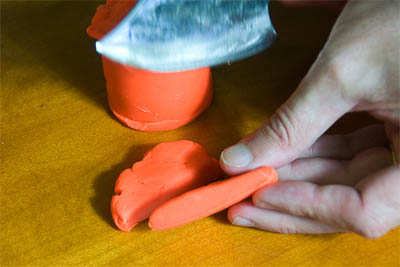
If we flatten this "rock" and then cut it, what do we see? No foliations. Why? We could see the flattened grains in the gneiss because there were different minerals. If all the grains are the same, we don't see any banding.
